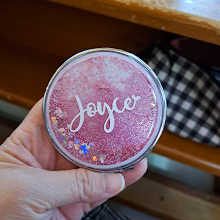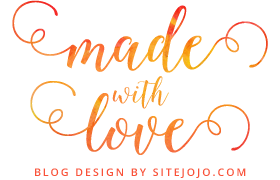Transition to Endemic Phase
According to the Ministry of Health Malaysia, the transition to endemic phase is the 'exit strategy' to ensure that we can return to 'normalcy'. The pandemic situation has changed from the previous year. Despite the high number of cases, most cases are asymptomatic or have mild symptoms.
Here are the "Reopening Safely" steps outlined by the Ministry of Health Malaysia that we are advised to adhere to during the transition to endemic phase.
Step 1: Self-care
Here are the self-care steps that we need to take during the transition to endemic phase. If you are COVID-19 positive and have no or mild symptoms, you may practice self-care at home by gaining an understanding of the disease, self-monitoring your health status, knowing when to seek treatment, and securing support from your family and friends.
So, what do we do for self-care? First, self-care means self awareness. Gain an understanding of the disease, including its progression and deterioration. Second, self-management. Monitor your health and know when to seek treatment. Visit or contact your doctor if you have any concerns. Third, secure support. Always stay connected to your family and friends. Ensure you have quick access to the virtual CAC or emergency hotline.
Step 2: Continue safety measures
First, wear well-fitted mask in public places. Call out those who are not wearing mask properly (see infographic in BM - I hope my translation is correct). Second, continue the habit of hand-washing with soap and water or use hand sanitizer. Third, ensure optimal cleanliness at premises (I'm not very sure if this is directed at the public or the premise owners). Fourth, practice physical distancing based on situations. Fifth, ensure good ventilation.
Step 3: Wear a well-fitted mask properly
New research shows making a mask fit tighter can decrease exposure to infectious aerosols by about 95 percent. Methods of improving effectiveness include tucking in the sides of the mask close to your face, make ear loop knots to tighten fit on surgical mask, secure metal bridge over nose, and wear a second cloth mask over a surgical mask (double masking).
The main message here is when we wear our mask properly, we help to reduce the risk of spreading the COVID-19 virus to others. You can view the infographic in BM here.
Step 4: Know & practice preventive measures
Basically, if we understand what endemic means, what we need to do now is to prevent the spread of COVID-19 and learn to live with COVID-19.
The CDC defines endemic as "the constant presence and/or usual prevalence of a disease or infectious agent in a population within a geographic area". This also means, "a point at which the infection is no longer unpredictably disruptive".
Be mindful that first, it goes back to basic preventive measures to prevent the spread of COVID-19 such as wearing well-fitted mask, hand-washing, physical distancing, and good ventilation. Second, complete your COVID-19 vaccination and booster. Third, practice healthy lifestyle to prevent Non-Communicable Diseases (NCDs) such as cardiovascular diseases, cancers, chronic respiratory diseases, and diabetes.
Healthy lifestyle practices are also important to strengthen our immunity, i.e., stop smoking, eat healthily, manage stress, limit alcohol consumption, and engage in physical activities.
Step 5: Always do self-risk assessment
From 1 April 2022, the transition to endemic will begin with the opening of borders, physical distancing for jemaah prayers removed, operating hours restriction for businesses dropped, among others. So, it's inevitable that more and more people will be out there.
It is prudent that we do a self-risk assessment when we are about to go to certain places. Places with higher risks include those that we will spend longer hours at, crowded or with limited physical distancing spaces available, most people are not wearing mask, and enclosed with poor ventilation.
Ask yourself, do you need to go there? If you have no choice, then best is to practice basic preventive measures as mentioned in steps 2-4 above.
Step 6: Practice TRIIS
TRIIS is basically Test, Report, Isolate, Inform, Seek. This is the gold standard and new norm to ensure we do our part to be accountable to our own safety and others. Remember, kita jaga kita.
Test: Get tested with a self-test kit (RTK-Ag) as soon as possible if you are experiencing any infection symptoms such as runny nose, fever or cough.
Report: Report the test result (negative, positive or invalid) in your MySejahtera app immediately.
Isolate: Isolate yourself or self-quarantine immediately with discipline if you have been tested positive for COVID-19. Adhere to the Home Surveillance Order (HSO) imposed by MOH.
Inform: Inform all your close contacts whom you have met within three days before you do self-test and report to the healthcare authorities via MySejahtera.
Seek: Seek immediate treatment at any healthcare facility or CAC nearby if you are experiencing worsening symptoms such as breathing difficulties, chest pain or prolonged fever.
Step 6a: Self-care during home isolation/quarantine
Category 1 (asymptomatic) and Category 2a (mild symptoms) cases may undergo isolation at home. Follow isolation procedures to prevent your family members from infection. Virtual monitoring will be done by the health department following your test report in your MySejahtera app. You are required to report your health status via the Home Assessment Tool (HAT) on MySejahtera twice a day.
During home isolation, please stay in your room. Ensure good ventilation in your room. Take Paracetamol for your fever. Stay hydrated throughout the day. Use an oxymeter to monitor your SPO2 level, and take plenty of rest.
Step 6b: Recognize COVID-19 warning signs
During home isolation, make sure that you can recognize these COVID-19 warning signs: prolonged chest pain, breathing difficulties, prolonged cough, worsening fatigue, serious vomiting & diarrhea, prolonged fever, appetite loss, loss of awareness/confused state, infrequent urination, blue lips & fingers, and SPO2 level less than 95%.
If you are experiencing any of the above warning signs, seek treatment immediately at any nearby CAC or healthcare facility. Call 999 in case of emergency.
TLDR? Just look at the infographic below for summary.
What to do based on your COVID-19 status?
Extra resources:
Sidang media Menteri Kesihatan Malaysia regarding the transition to endemic phase
Steps to take to live with COVID-19
My COVID-19 Positive Experience and How Did I Manage My Home Quarantine





























No comments